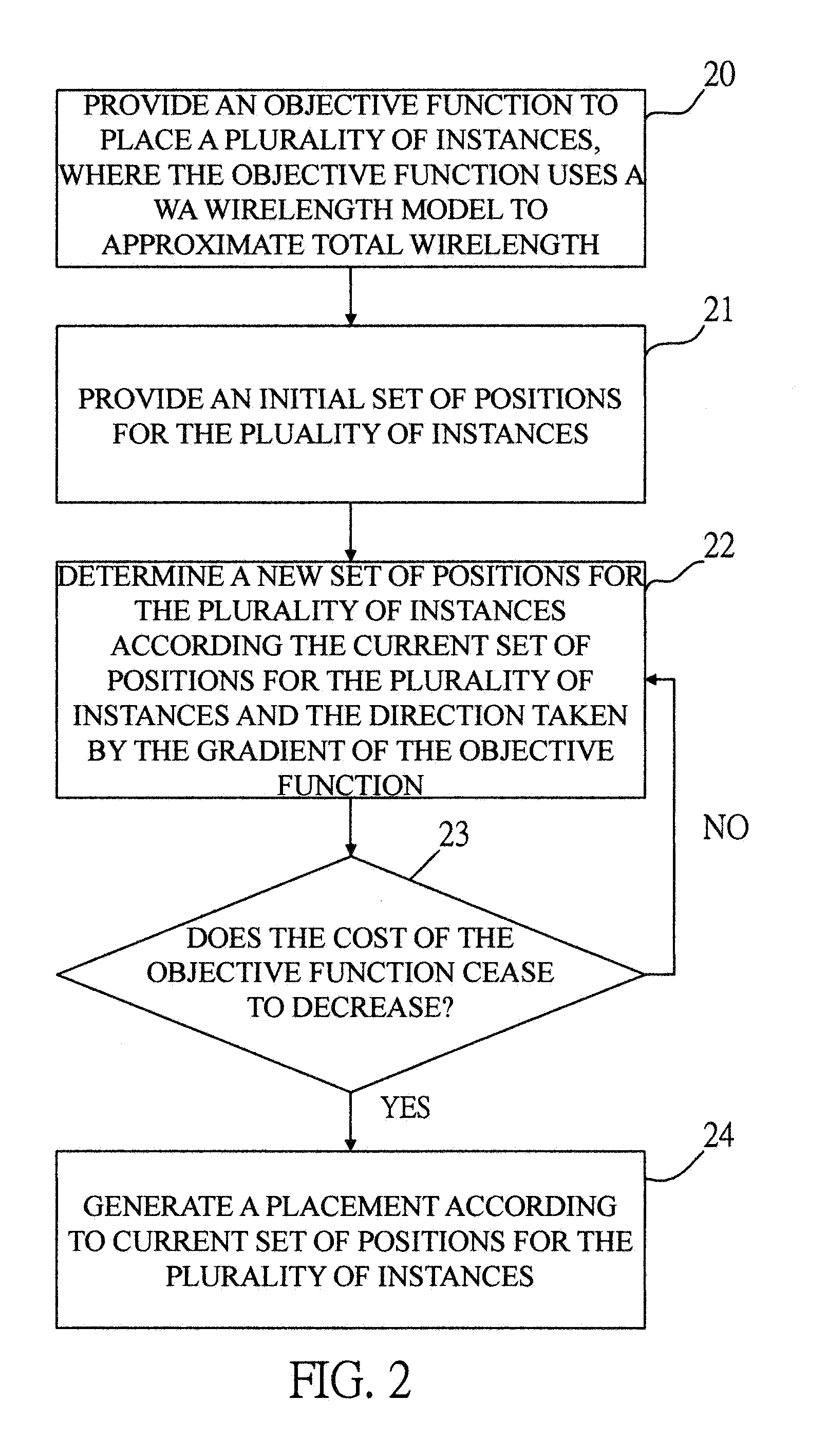Method of analytical placement with weighted-average wirelength model
a placement algorithm and wirelength technology, applied in computing, instruments, electric digital data processing, etc., can solve the problems of many research challenges, difficult optimization, and difficult modern placement problems, and achieve the effect of limiting the quality of layout results
- Summary
- Abstract
- Description
- Claims
- Application Information
AI Technical Summary
Benefits of technology
Problems solved by technology
Method used
Image
Examples
Embodiment Construction
[0033]The detailed explanation of the present invention is described as following. The described preferred embodiments are presented for purposes of illustrations and description, and they are not intended to limit the scope of the present invention.
[0034]Typically, the placement problem for an integrated circuit (IC) is solved in three stages (1) global placement, (2) legalization, and (3) detailed placement. Global placement evenly distributes the instances and finds the best position and layer for each instance to minimize the target cost (e.g., wirelength). Then legalization removes all instance overlaps for each layer. Finally, detailed placement refines the placement solution.
Weighted-Average (WA) Wirelength Model
[0035]In this invention, a novel weighted-average (WA) wirelength model for analytical global placement is presented.
[0036]In general, a placement problem can be formulated as a hypergraph H=(V,E) placement problem. Let V={v1, v2, . . . , vn} represent instances, and ...
PUM
 Login to View More
Login to View More Abstract
Description
Claims
Application Information
 Login to View More
Login to View More - R&D
- Intellectual Property
- Life Sciences
- Materials
- Tech Scout
- Unparalleled Data Quality
- Higher Quality Content
- 60% Fewer Hallucinations
Browse by: Latest US Patents, China's latest patents, Technical Efficacy Thesaurus, Application Domain, Technology Topic, Popular Technical Reports.
© 2025 PatSnap. All rights reserved.Legal|Privacy policy|Modern Slavery Act Transparency Statement|Sitemap|About US| Contact US: help@patsnap.com



